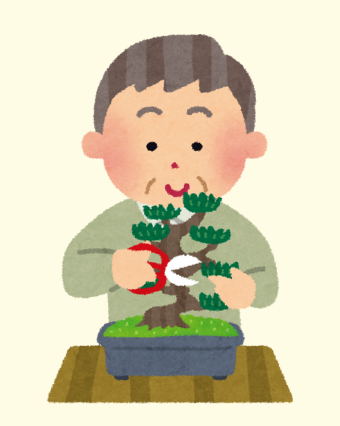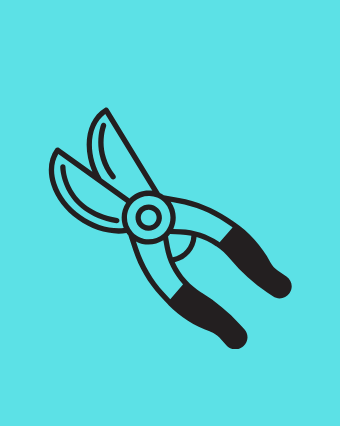Pruning is one of the most essential aspects of maintaining a healthy and beautiful juniper bonsai. Junipers are among the most popular species for bonsai due to their resilience, evergreen beauty, and ability to be shaped into striking forms. However, regular pruning is necessary to keep your juniper bonsai thriving and looking its best.
In this blog, we’ll explore the art of pruning your juniper bonsai, from the right tools to use, when to prune, and techniques for shaping your tree.

Why Pruning is Essential for Juniper Bonsai
Pruning a juniper bonsai serves two primary purposes: maintaining the tree’s health and enhancing its aesthetic appeal. Over time, a juniper bonsai will naturally grow new shoots and branches, and without regular pruning, it can become overgrown, losing its compact and balanced form.
Here are the key benefits of pruning:
Promotes healthy growth: Removing dead or damaged branches allows your tree to redirect energy to healthier parts.
Encourages new growth: Pruning stimulates the growth of new shoots, ensuring your bonsai remains lush and full.
Maintains the tree’s shape: Regular pruning is crucial for maintaining the desired shape of your bonsai.
Improves airflow and sunlight exposure: Pruning helps open up the structure of the tree, allowing for better airflow and sunlight penetration, and reducing the risk of fungal infections.
Types of Pruning for a Juniper Bonsai
Structural Pruning: This involves removing large branches or shaping the main structure of the tree. Structural pruning is usually done during the early stages of training the bonsai and should be carried out carefully, as removing large branches can have a significant impact on the tree’s overall appearance.
Maintenance Pruning: This is the most common type of pruning and involves trimming back overgrown foliage and small branches. It helps maintain the shape and size of the tree while encouraging denser foliage growth.
Pinching: For junipers, pinching (rather than cutting) is often the preferred method for removing new growth. Using your fingers, you can gently pinch off the tips of new shoots to maintain the bonsai’s shape without leaving cut marks that could turn brown.
When to Prune Your Juniper Tree
Timing is crucial when it comes to pruning a juniper bonsai. Ideally, pruning should be done during the growing season, typically from early spring to late summer. This allows the tree to recover quickly and encourages new growth.
Spring and early summer: The best time for structural pruning or making significant cuts. The tree is actively growing and will heal faster during this period.
Late summer: A good time for maintenance pruning. The tree’s growth will slow down, allowing you to shape it without encouraging too much regrowth before winter.
Avoid heavy pruning in winter: Juniper bonsais become dormant in winter, and making major cuts can weaken the tree or leave it vulnerable to disease.
Tools You’ll Need for Pruning a Juniper Tree
Having the right tools is important to ensure clean cuts and prevent damage to your tree. The key tools for pruning a juniper bonsai include:
Bonsai pruning shears: These are sharp, precise tools designed for making clean cuts on small branches and foliage.
Concave cutters: These are useful for removing thicker branches without leaving large scars on the trunk.
Wire cutters: If you’re wiring your bonsai to shape its branches, wire cutters will help remove the wire without damaging the tree.
Tweezers: Handy for pinching new growth and removing any dead needles or debris from the branches.

How to Prune a Juniper Bonsai: Step-by-Step
1. Evaluate the Tree’s Shape: Before pruning, take some time to observe the tree from all angles. Consider the natural flow of the branches and the overall balance of the bonsai. Pruning should enhance the tree’s natural shape while maintaining harmony and balance.
2. Remove Dead or Damaged Branches: Start by cutting away any dead, diseased, or damaged branches. These branches will not contribute to the tree’s growth and may harbor pests or diseases.
3. Pinch New Growth: For junipers, it’s often better to pinch new growth rather than cutting it with scissors, as cutting can leave unsightly brown tips. Use your fingers to gently pinch back new shoots, maintaining the desired shape of the tree.
4. Thin Out Dense Areas: If certain areas of your juniper bonsai have become too dense with foliage, selectively prune to open them up. This allows light and air to reach the inner branches, which is important for the tree’s health.
5. Shape the Tree: When shaping your bonsai, consider the basic styles of bonsai (upright, slanting, cascade, etc.) and prune accordingly. If necessary, use wire to help train the branches into the desired position.
6. Check the Balance: After you’ve pruned, step back and check the tree’s overall shape and balance. Make small adjustments as needed to ensure a harmonious appearance.
Common Mistakes to Avoid When Pruning
Over-pruning: Removing too much foliage at once can weaken your juniper bonsai and inhibit its growth. Aim for gradual, consistent pruning rather than drastic cuts.
Using dull tools: Dull pruning tools can cause ragged cuts, leading to slower healing and increasing the risk of infection. Always ensure your tools are sharp and clean.
Pruning in the wrong season: Heavy pruning in winter or late autumn can harm your tree, as it may not have enough energy to heal and grow properly before the next growing season.
Post-Pruning Care
After pruning your juniper bonsai, it’s important to provide the right aftercare to ensure the tree heals and continues to grow well.
Watering: Be mindful of watering after pruning. Avoid overwatering, as the tree may need less water while it recovers from pruning.
Sunlight: Ensure your bonsai receives enough sunlight, but avoid placing it in direct, harsh sunlight immediately after pruning, as the tree is in a more delicate state.
Fertilization: It’s a good idea to fertilize your juniper bonsai after pruning to give it the nutrients it needs to recover and grow. However, avoid over-fertilizing, as this can cause new growth that may be too weak.

Conclusion
Pruning is an essential practice for maintaining the health and beauty of your juniper bonsai. With the right techniques and tools, you can shape your bonsai into a stunning miniature tree that reflects both your creativity and the natural beauty of the juniper species. Regular, careful pruning ensures that your bonsai remains healthy, vibrant, and well-formed for years to come.
More blogs:
- Can Sparkling Water Benefit Bonsai Trees?: Unlock The Secret
- How to Fertilizing Your Juniper Bonsai for Vital Growth
- How to Wire Bonsai Trees for Perfect Growth
- Can I Have A Juniper Bonsai Indoor?: Our Eye-opening Advice
Have questions? Let us know below we will try our best to answer all of them.